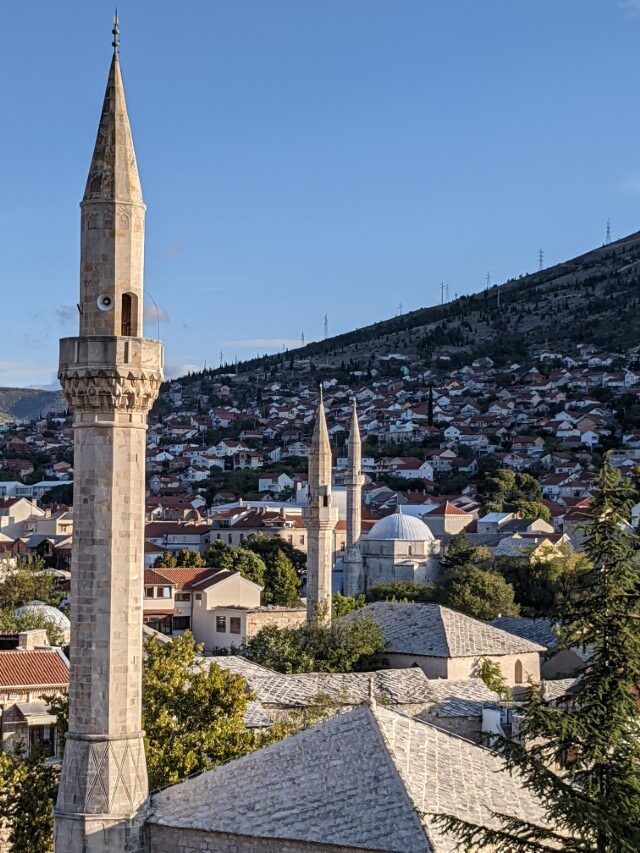Like most regions in Europe, the country of Bosnia and Herzegovina has a long and complex history. In addition, this part of the Balkans (especially Mostar and Sarajevo) was the front lines of the Yugoslav Wars from 1991-1995. It seems the tensions from that war are unresolved as a lot of horrific things happened. The area is left with a weak national government and strong ethnic and religious divisions.
Počitelj
We stopped at this tentative UNESCO Heritage town on the way to Mostar. This is a walled city on a steep hillside, founded in 1300’s and improved under 400 years of Ottoman control. This is first place that we saw the thick stone shingled roofs on nearly all the residences inside the city. The roads, walls and even roofs are built from rock. We visited one of the mosques and later climbed a decaying defensive tower with steep decaying stairs. Great views, but a bit treacherous to navigate.













Mostar
The beautiful bridge is the most well known feature of this ancient city. The old bridge is simply called “Stari Most” ,literally the Old Bridge. This is also the root of the name of the city Mostar. The Ottoman empire (Suleiman the Magnificent) built the bridge in the 1500’s. Croatian forces destroyed the bridge in 1993 during the fighting that took place in Mostar. The bridge was later rebuilt using the original construction techniques. Similarly, much of the old city was damaged or destroyed in 1991-1995 and has since been restored.
We spent a cold, rainy, windy afternoon indoors enjoying the views from our apartment, and then a great day exploring the city. We took a walking tour, ate a delicious local traditional meal for lunch (lots of meat), did some shopping in the old town and visited a mosque. Our apartment was close to the old town and we could see the Mostar bridge and parts of the old town from the apartment balcony.










Sarajevo
Know for three events:
- Assassination of Prince Franz Ferdinand which lead to World War I.
- 1984 Winter Olympics
- City under siege for four years (1992-1996) in the Homeland wars.
But like most cities in this region, there is a rich history under the Ottomans in the 15th century, then the Hapsburgs and the Austro-Hungarian empire in the late 19th century. Much of the city needed reconstruction after the Homeland Wars, but there are awesome buildings, cathedrals, mosques and synogogues all located in the old town. We also visited a somber museum dedicated to 8,000+ Bosnian Muslim men and boys who were executed over the course of a few days in 1995 in a town called Srebrenica.
There are still bullet holes and other damage from the recent wars, especially in private residences. Some damaged buildings are simply abandoned. The infamous Sniper Tower is a former bank, now a bullet riddled 10 story concrete shell, is visible through much of the city.
Our apartment (Le Petit Prince) was located in a residential area about 10 minutes from the old town, so we felt a bit like locals when walking in to town or shopping in the local markets. We ate a local dish, which consisted of lots of grilled meats and sausages served with very tasty pita breads.







The Dervish house
We also spent some time at the Dervish House, located about 20 minutes outside of Sarajevo. This is a Sufi Muslim monastery first mentioned in writing from 1660’s. They chose a magical location, under the overhang of a large cliff and adjacent to the Buna river, where the river first comes out of the mountain.






Next up, we travel to Pecs, Hungary on our way back to Budapest where we will turn in our rental car.


Leave a Reply